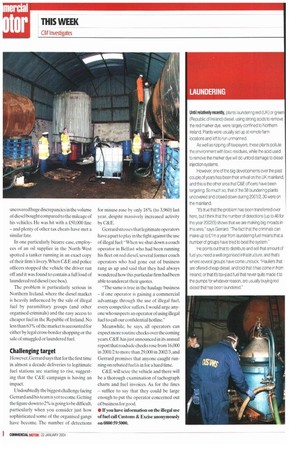LAUNDERING
Page 30

If you've noticed an error in this article please click here to report it so we can fix it.
Until relatively recently, plants laundering red (UK) or green (Republic of Ireland) diesel. using strong acids to remove the red marker dye. were largely confined to Northern Ireland. Rants were usually set up at remote farm locations and left to run unmanned.
As well as ripping off taxpayers, these plants pollute the environment with toxic residues, while the acid used to remove the marker dye will do untold damage to diesel injection systems.
However, one of the big developments over the past couple of years has been their arrival on the UK mainland, and this is the other area that C&E officers have been targeting. So much so, that of the 38 laundering plants uncovered and closed down during 2001/2.30 were on the mainland.
"It's true that the problem has been transferred over here, but I think that the number of detections (up to 46 for the year 2002/3) shows that we are making big inroads in this area," says Gerrard. 'The fact that the criminals can make up to -£1 ma year from laundering fuel means that a number of groups have thed to beat the system."
He points out that to distribute and sell that amount of fuel you need a well organised infrastructure, and that's where several groups have come unstuck: 'Hauliers that are offered cheap diesel, and told that it has come in from Ireland, or that it's tax-paid fuel that never quite made it to the pumps for whatever reason, are usually buying red diesel that has been laundered."




























































































































































































